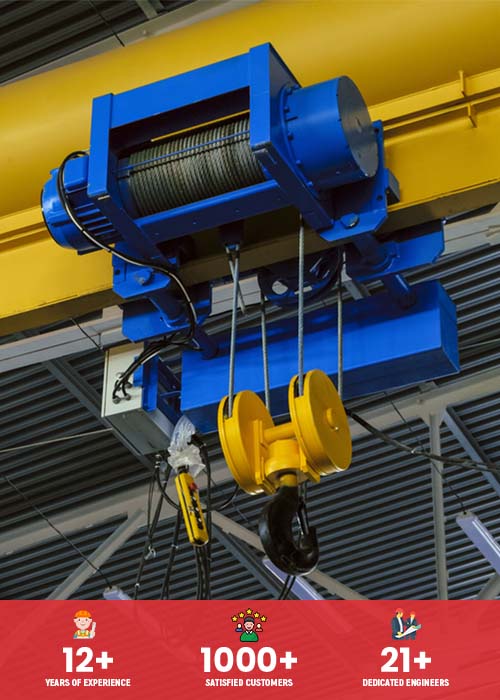Best material for a gantry crane
A gantry crane is an overhead crane that moves on wheels, a track or rail system while towing a bridge, trolley and hoist. It typically has one or two beams supported by freestanding legs. Gantry cranes, a kind of overhead or bridge cranes, are used as the lifting solution in workshops, warehouses, freight yards, railroads, and shipyards. Gantry cranes are a popular option for overhead lifting since they can handle both light and heavy loads. Because of the variety of gantry cranes, one can be adapted to any lifting application. Gantry crane manufacturers in India basically use Aluminum and steel for manufacturing gantry cranes and we will discuss which out of these two materials is best for gantry crane manufacturing
Gantry Crane Materials
Since the 1870s, steel has been used in lifting applications. Iron constructions predominated up until this point. Contrarily, aluminium is a very recent addition to the market. Much more recently, aluminium lifting equipment has proliferated across the sector. When used for industrial lifting, both aluminium and steel offer benefits and drawbacks. This article focuses on gantry cranes in particular, comparing the two material options and providing guidance for users and specifiers.
Aluminium vs Steel
Strength to weight ratio
Steel can weigh 2.5–3 times more than aluminium for gantry cranes of similar size and load rating. Aluminium gantries have a lower total weight than steel gantries and are simpler to operate physically due to this substantial difference in strength to weight ratio. The simplicity of tool assembly, use, and disassembly is crucial in a business environment where worker health and safety have never been more vital. Aluminium gantries provide substantial economic advantages since they are essentially movable.
Resistance to corrosion
Any finish applied to a steel surface eventually erodes, peels, chips, or cracks. This will leave a surface that is exposed and vulnerable to rust. If inspections are not carried out frequently, this significantly reduces the equipment’s lifespan and may be dangerous. The similar problem does not arise with aluminium, especially when it has been anodized (artificially aged).
According to the (British Standard), low-carbon steel can lose between 80 and 200 microns of material thickness annually in areas with very high corrosion (Category 5 of 6). The aluminium construction will warrant a lower maintenance cost over the course of the product’s life because surfaces won’t need to be painted over or treated on a regular basis.
Deflection
Aluminium gantries have a marked tendency to deflect. The material, but also the structure’s design, can have an impact on the length to deflection ratio. An aluminium beam can bend but will straighten up once the load is lifted, but a steel beam will appear to remain relatively level under strain. When the aluminium gantry’s load limit is exceeded, the beam will gradually continue to bend more and more until the material eventually reaches its yield point. This is known as soft failure or benign failure and happens when this happens. Steel does not flex as much under stress as aluminium does; instead, it maintains a reasonably flat and stiff posture.
Strength of materials
Steel unquestionably has the advantage in overall strength, despite aluminium’s advantage in strength to weight ratio. Steel gantries come in capacities ranging from 0.5t to over 100t. The top aluminium gantries in the world can support up to 5 tonnes. Additionally, steel gantries come in much bigger height and beam length configurations. Although the longest aluminium beam length is just about 30 feet, it is not uncommon to encounter steel gantries with 100 foot beams.




